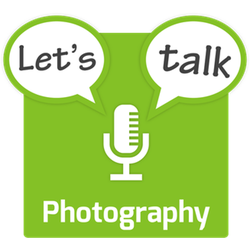Panel
- Bart Busschots (host) – @bbusschots – Flickr
In this solo show Bart answers friend of the show Allison Sheridan’s deceptively simple listener question – ‘why 35mm?’. This takes us on a journey from Thomas Edison and the Eastman Kodak company to Leica, Henri Cartier-Bression, Nikon, and eventually DSLRs, Micro Four-Thirds, and full frame sensors. Along the way we demystify some photographic jargon like ‘crop factor’ and EFL.
While this podcast is free for you to enjoy, it’s not free for Bart to create. Please consider supporting the show by becoming a patron on Patreon.
Reminder – you can submit questions for future Q & A shows at http://lets-talk.ie/photoq
Notes
Friend of the show and frequent guest Allison Sheridan the simple question “why 35mm”?
The TL;DR version is simple — it’s a pure accident of history, there’s absolutely nothing special about 35mm.
There is of course much more to it than that, and a fuller telling of the story lets you connect the dots from Thomas Edison right up to modern digital cameras and three very relevant pieces of photography jargon — full frame, Crop Factor, and Effective Focal Length, or EFL.
Start with Edison, Kodak, and the Invention of the Movies
The still camera came long before the movie camera, but the invention of the movie camera is the trigger that led to the photographic revolution that was the 35mm film format.
The details get confusing and complicated, but our origin story for the 35mm film format comes from the meeting of two giants — Thomas Edison and the Eastman Kodak company. Kodak were world leaders in creating flexible celluloid photographic film, and Edison was busy inventing the movies. One of Kodak’s major products was their 70mm strips of film, mean while, the Edison company was on the hunt for mass-produced flexible film that could be rolled up onto a movie camera. 70mm was too big for their needs, but it’s ubiquity had a strong appeal. It was Edison engineer William Kennedy Dickson who had the light-bulb moment that really kicks off our story — simply cut Kodak’s 70mm film in half length-ways! Half of 70mm is of course 35mm.
To make these half-width strips of film pass smoothly and reliably through their movie cameras, the Edison company added square perforations along both sides that meshed with cogs inside the movie cameras. This means that 35mm film doesn’t contain 35mm negatives — each frame is actually 24mm by 18mm! Note this gives the popular 4:3 aspect ratio iPhones still use today!
Add the Iconic Leica Still Camera
35mm movie film was soon produced at a massive scale, so it was both cheap and ubiquitous. Meanwhile, some still photographers wanted small portable cameras that were much easier to carry around than the big bulky cameras available at the time. Leica weren’t the first to join the dots here, but they made they were the most successful of the early pioneers who built small thin (for the time) still cameras that exposed onto 35mm motion picture film.
Leica didn’t use the 35mm film in the orientation it was used in movie cameras, they rotated it by 90 degrees. This meant that the 24mm of usable width for movie frames became 24mm of usable height, and the width could be extended to 36mm. This changed the aspect ratio from the movie film’s 3:4 to the 2:3 SLR photographers know and love to this day.
These early 35mm still cameras really were revolutionary — they enabled entirely new photographic styles. One of the earliest pioneers of this new portable format was the early French street photographer Henri Cartier-Bresson.
Kodak Re-Enters the Frame
These early 35mm still cameras were quite a bit more tricky to prepare for a shoot than the iconic reflex cameras that soon followed. Loading the film was a fiddly job that had to be done in a dark room — the film had to be spooled into a re-usable canister and inserted into the camera before it became light-safe.
Having played an important part in the invention of 35mm movie film, Kodak re-enter our story in 1934 with the release of the standardised pre-loaded film cassettes still used in 35mm film cameras today. Rather than having to spool your own film and load it into the camera in the dark room, you just pop open a door on the camera, and slot in an off-the-shelf roll of film, and you can even do it in broad daylight!
To avoid confusion with their popular 35mm movie film Kodak officially designated these cassettes as the 135mm standard, but no one ever called them that, they were, and still are, referred to as 35mm rolls of film.
AGFA and others soon followed Kodak’s lead, resulting in a vibrant ecosystem of 135mm film cassettes with all kinds of film for all kinds of situations. Colour, monochrome, slow with small grains, fast with big grains etc..
This vibrant 35mm film ecosystem fed the development of an equally vibrant ecosystem of 35mm cameras, including the extremely portable range finders from Leica that Cartier-Bresson love, and the slightly bigger but still very portable SLRs that became the work-horse of for photography hobbyists and pros for decades. It was Nikon’s legendary F range that led the way for SLRs.
Kodak’s 135mm cassettes have never really been replaced, from the 1930s right up to the digital revolution, they were the still film format. That’s 6 decades!
Enter Digital
When digital cameras started to reach the main stream in the 1990s it was much too expensive to create digital sensors as large as the usable area on 35mm film, so they used smaller formats. Once the initial chaos settled down one format emerged as the new normal for entry level and prosumer DSLRs, the so-called Advanced Photo System type-C, or APS-C format. Nikon branded this format DX, and Canon EF-S.
DX sensors are 23.5×15.6mm, while EF-S sensors are just a little smaller at 22.3×14.9mm. This means that compared to 35mm film SLRs, APS-C sensors are effectively cropped. So, if you put a 50mm lens in front of an APS-C sensor you’ll get the same perspective as you would have on 35mm film, but the field of view will be substantially smaller.
Crop Factors
Most early DSLR users were former SLR users, so they needed an easy way to understand the difference in field of view the same focal length lens would give on their new DSLRs as compared to their old film SLRs. The simplest way to represent this difference is as a ratio, in other words, by what factor do I need to multiply the focal length on 35mm film to achieve the same field of view on an APS-C sensor?
For Canon’s slightly smaller version of APS-C the so-called crop factor is 1.5, so a 50mm lens on a Canon EF-S body will have the same field of view as a 75mm lens on an old Canon 35mm film body. This makes the math very easy, which is why it’s surprising just about every other manufacturer chose to follow Nikon’s lead and ended up with a much less convenient crop factor of 1.6! This means that a 50mm lens on a DX body will have the same field of view as an 80mm lens on an old Nikon 35mm SLR.
Effective Focal Lengths
Before the 35mm film format came to dominate the photographic world, it would have made no sense what so ever to start associating specific focal lengths with specific fields of view, but thanks to the ubiquity of the 35mm format, that’s exactly what happened. Photographers started to refer to different fields of view by the focal lengths of the lenses that would produce them on 35mm camera bodies. 28mm became synonymous with wide angle views, 50mm became a kind of default lens, and 70mm the perfect portrait lens.
APS-C ruined all that, so rather than learning to think in terms of a more direct measure of the field of view, like say, the actual angle of the field of view, photographers chose to keep using the old numbers to describe APS-C lenses. So, a lens with an actual focal length of a little over 30mm would be said to have an effective focal length of 50mm because it had the same field of view a 50mm lens would give on a 35mm film body.
These days APS-C is being surpassed by the even smaller micro four-thirds format with its crop factor of 2. This makes the maths much easier, so on a micro four thirds body a lens with an actual focal length of 25mm will have the same field of view as a 50mm lens on a 35mm film body.
The Math
I’ve described all these relationships in English, but lets finish up with the actual mathematical equation:
f = EFL * c
Where f is the actual focal length in mm, EFL the effective focal length (also in mm), and c the crop factor (a dimensionless number).
Full-Frame Digital Sensors
As digital sensors became more affordable it also became practical to make digital sensors the same size as 35mm film exposures. Or, to put it another way, to make digital sensors with a crop factor of 1! Because the old 35mm format became a de-facto standard, these equally sized digital sensors became known as full frame sensors since the sensor would fill the full frame of a single 35mm exposure without any cropping.
The Irony of 35mm Becoming Seen as “Full Frame”
Before finishing up I just want to highlight something I find quite funny — today, we consider a full frame sensor to be really big, but when the 35mm format was introduced it was mocked for being absolutely tiny! It was seen as a toy compared to the much bigger large and medium format negatives real photographers using. These were multiple inches across, not just a few tens of mm!
To understand why 35mm was seen as tiny, it’s important to remember that in the early days of photography negatives were turned into positive prints using the contact printing technique. When you make a contact print you put photographic paper behind the negative and shine light through it, this produces a print the same size as the negative, so if you wanted a 4ft by 6ft print you need a 4ft by 6ft negative!
This remained true until someone had the bright idea of inserting a lens between the negative and the photographic paper, adding some magnification. Or, to use the correct jargon, until the photographic enlarger was invented. Enlargers don’t just magnify the image, they also magnify the film grain and all imprefections, and, they spread the same amount of light over a wider area, so the image they cast is dimmed. These two factors set limits on the amount of enlarging you can get away with, and until films became fine-grained and photographic paper sufficiently sensitive, you simply couldn’t get a good image from a small negative.
As is often the case, the common wisdom that enlarging resulted in poor images out-lasted the technical reality, hence all the scoffing at those tiny 35mm film cassettes! What the engineers in Leica, and the 35mm pioneers like Cartier-Bresson knew was that enlargers, films, and papers were more than advanced enough to make great prints from small negatives!
So, today’s large full-frame sensors are yesterday’s teeny tiny toy negatives

